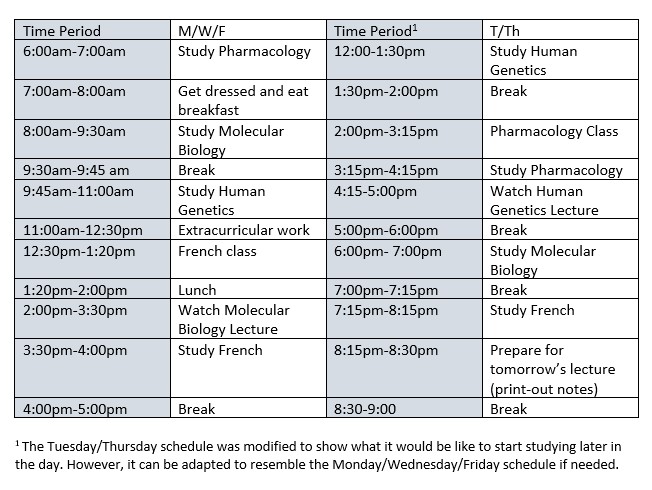
Studying tips from a fourth-year student
Learn about techniques that work for one Healthy U volunteer
Healthy U is a student group of trained volunteers dedicated to educating fellow students on important health-related matters. This article was prepared by a Healthy U student volunteer.
Being in University involves learning about what study methods work best for you. There have been times when I felt that I cannot relax, especially with midterms, labs and extracurriculars on my mind. Trying to balance a social life in tandem with my schoolwork used to feel like a lost cause. Over time, I have learned the best way to schedule my time and study methods that have helped me make the grade. While I have found this pattern of studying to be helpful for me, please be mindful that what works for one person may not work for everyone else. Try to keep an open mind while learning what works best for you!
Planning out your time
In my opinion, the most important aspect of a studying regimen is scheduling out your time. It can help get rid of the stress of when you are going to have time to study. I find that making a weekly schedule at the beginning of the semester works best. Then, depending on how busy I am during the week, I may choose to modify it accordingly to what best fits my needs. That being said, you may find it easier to make a new schedule every week or every day!
Here is an example of a weekly study schedule:

Study methods
Pomodoro Method
A study method that I normally use is called the pomodoro method. With this method, you study for a set length of time, then stop for another set length of time for a break. The standard times used are studying for 25 minutes, then taking a quick break for 5 minutes. This cycle is repeated 3 times, after which a longer break is taken. I have personally found that 25 minutes isn’t enough time for me, so I use longer time intervals and I give myself longer breaks to compensate.
Why are breaks important?
Taking regular breaks is imperative when studying because it allows our brains to refresh. The optimal time for a break is between 15-20 minutes. Anything longer than that can have a negative effect on our motivation. Moving around, meditating, or doing a new task are all things that can be done on a break.
PQ4E method
The PQ4R method is the method that I use when actively studying. This method has helped me organize my studying better and has helped me optimize the time I set aside for studying. PQ4R stands for preview, question, read, reflect, recite and review.
- Preview
- For the preview step, I quickly skim over the notes that my professors provide. I look specifically for terms and concepts that I recognize.
- Question
- For this step, I try to come up with questions that are relevant to the material I have looked over.
- Reading
- During this step, I actively read, with the goal of understanding the material and take notes.
- Reflect
- At this point, I make sure that I truly understand what I have read.
- Recite
- For the final step, I either make flashcards, or recite key points that I have learned out loud, so that I am able to remember the information in the future.
Experiment with these strategies and take your time to get to know what study method works best for you. We are all different, and there are so many study methods out there that may be a good fit.
Sources
The importance of study breaks
How to Study the PQR4 method
This is an edited version of a piece that was previously published on the Healthy U website.






